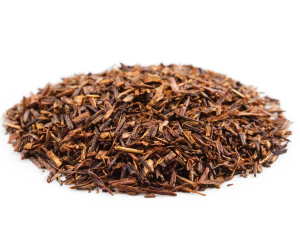A Marlborough winery is attempting to replace sulphur dioxide (SO2) from their organic Sauvignon Blanc and replace it with green tea.
SO2 is a preservative that’s widely used in winemaking for its antioxidant and antibacterial properties. In terms of wine, adding it helps prevent oxidation, ensuring the wine stays fresh. In recent years the use of SO2 has come under scrutiny as some consumers say they react to wines that contain it. Reactions range from allergy effects, such as runny nose, itchy throat, skin rashes to asthma attacks. The number of producers not wanting to add sulphites is increasing world-wide and the orange wine movement has grown exponentially on the back of this.
For Erica and Kim Crawford of Loveblock Wines in the Awatere Valley, the move away from sulphur additives is part of their organic vision. As a South African, Erica has been well aware of research being undertaken in her birth country, that has seen some wineries replacing sulphur with powdered tea, rooibos and honeybush in particular. Taking the lessons learned there, the Crawfords are introducing green tea to their organic Sauvignon Blanc, as an alternative antioxidant. Not only is green tea a natural product that is registered as a wine additive, it also has very strong antioxidant properties.
“Each time we expose the juice to air, we add 5 mg/l of green tea powder as an antioxidant. So harvest, crush, float, racking after ferment, filtration and bottling. Total add this year was .16 grams per litre. The product is soluble in juice and wine, so one extra addition was done this year at the pre-bottling stage.”
The Loveblock wines are believed to be the first in New Zealand to use the green tea additive as an antioxidant, with the 2018 Sauvignon Blanc being the first to undergo the process.
However not providing a dose at the last pass to the bottling wine saw the 2018 wine ‘pinking’ and the colour changing to an orange, which clarified after a few weeks. This year with that lesson learned, the green tea was added at every point along the winemaking process and the result is no pinking in the wine.
Erica says there is no apparent flavour permutations coming from the green tea, but there are a number of other differences between wines where it is added and those without it.
“The 18 was hellishly interesting. We got a lot more orange zest, cumin and more spices at the back. And in my view, the green tea allows the flavours of the wine to flow more naturally. Sulphur tends to fix the flavour, and I think it can make a wine quite hard.”
In South Africa research is continuing into the use of other teas that could substitute sulphur. Rooibos and honeybush in particular. “South African winemakers using these say the honeybush (tea) is so powerful, it’s unbelievable. We are looking at trialing these next year. We are hopeful that we will get to the point that we won’t need to use sulphur at all in the future.”














